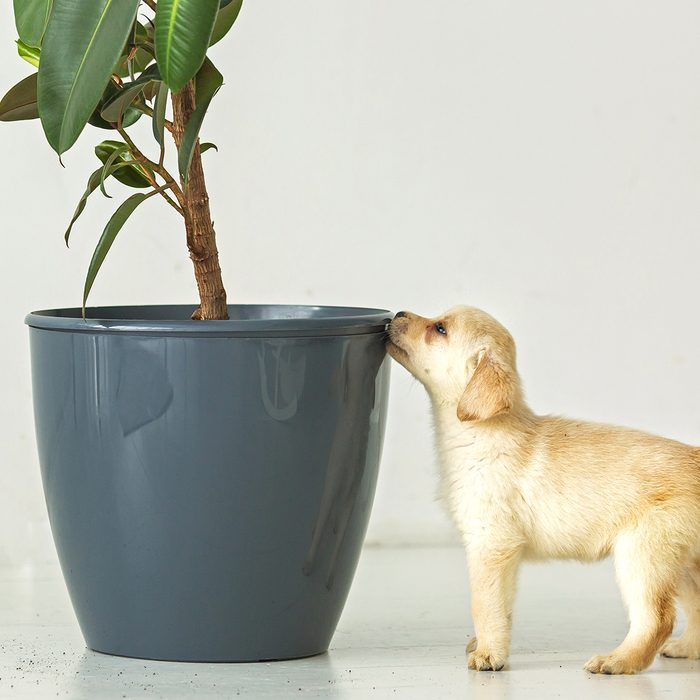
Plants and your pup
Plants are having a real moment right now, and for good reason. They add beauty to your home, help you feel more in tune with nature and they even boast health benefits. Unfortunately, some of the loveliest plants are poisonous to dogs, who don’t know which ones are safe to munch on or play with and which absolutely aren’t. With veterinary help, we’re pointing out the most common indoor and outdoor plants that are toxic to canines so you can avoid them for your home. Once you’re up to speed, make sure you also know these summer foods you shouldn’t give your dog.
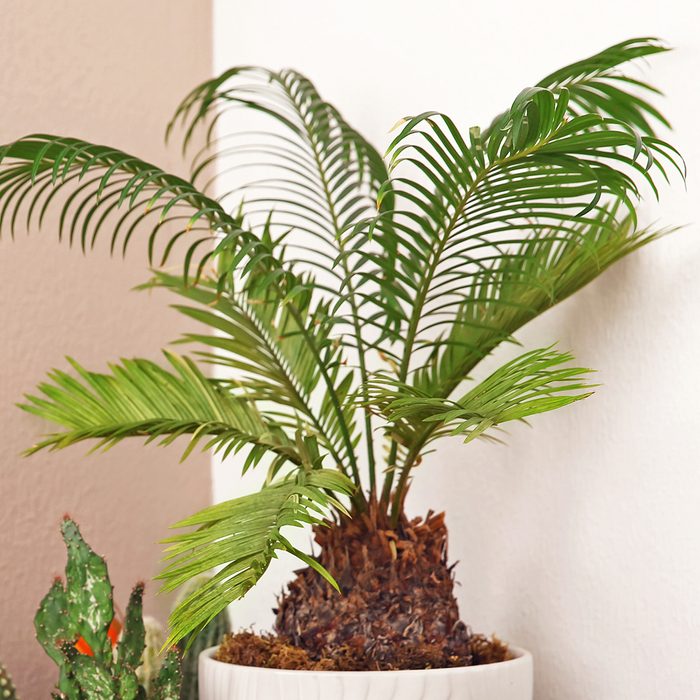
Sago palm
The sago palm is leafy, beautiful, and very easy to grow, which makes it a popular choice as an indoor plant. However, it is highly toxic to dogs, so you should definitely keep it out of your house. “If consumed by your dog, the sago palm causes severe vomiting, diarrhea and abdominal pain, as well as stumbling, tremors, seizures and temperature-regulation issues,” warns Christie Long, DVM, head of veterinary medicine at Modern Animal.
If your dog has ingested any part of this plant, says Dr. Long, it’s imperative to head to the nearest veterinarian immediately so that vomiting can be induced. In general, experts say it’s best not to induce vomiting yourself if your dog ingests a toxic substance.
Of course, plants aren’t the only worrisome things in your home. These household items are also hazardous for your pets.
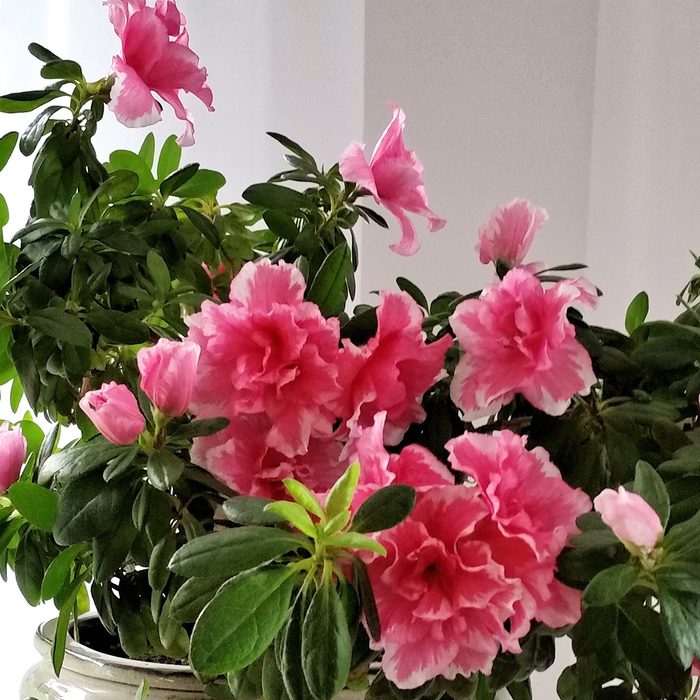
Azaleas
Azaleas are colorful and interesting to look at, so it’s easy to see why your dog might be attracted to them. Unfortunately, all parts of the azalea plant are poisonous to dogs, including the flower, leaves, seeds and even honey that’s made from the nectar. “When consumed by your dog, it can result in hypersalivation, vomiting, diarrhea, muscle weakness, vision problems, slow heart rate (bradycardia), heart arrhythmia and/or low blood pressure (hypotension), cardiovascular collapse and possible death,” says Shelly Zacharias, DVM, a veterinarian and the Vice President of Medical Affairs at Gallant. “Immediately go to your veterinarian or an emergency veterinary center if you suspect consumption.” Here’s how to pet-proof your home the easy way.
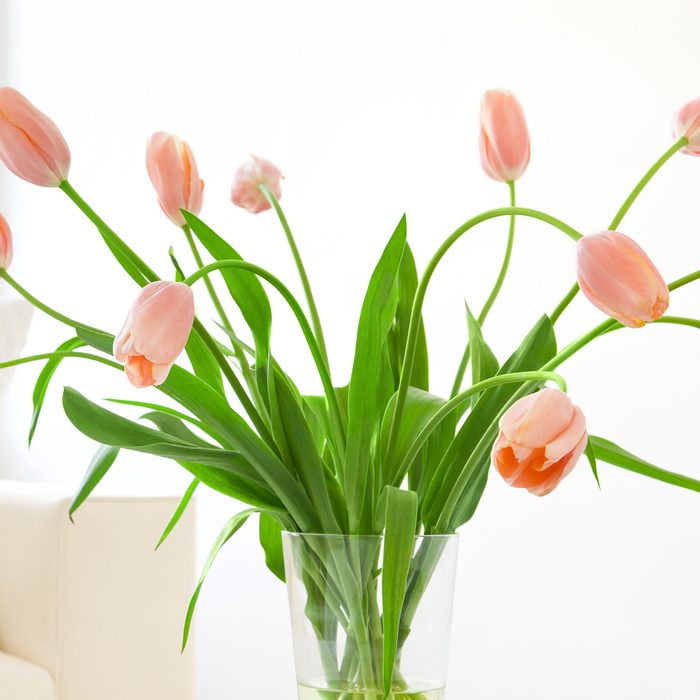
Tulips
Tulips are one of the most popular plants come springtime, but they can cause big problems for curious canines. The plant and flower are toxic, but the bulbs are especially dangerous when consumed. Clinical signs of ingestion include vomiting, diarrhea, hypersalivation and even depression, notes the ASPCA. If you suspect that your dog has munched on some tulips, consult your vet immediately. You can also call the Animal Poison Control Center (APCC) at 1-888-426-4435 for guidance.

Allium species, including garlic and onion
Though you may assume that all vegetables and herbs found in the garden are perfectly OK for your pup, that’s not always true. The allium species—which includes garlic and onions—are poisonous plants for dogs. “Any plant in the allium family, if ingested in large enough quantities, can cause a severe reaction in the bloodstream called hemolysis, in which red blood cells are destroyed in large numbers,” says Dr. Long. “The results are severe weakness, rapid breathing and red-colored urine.” She adds that forced vomiting by a veterinarian is key here, and many dogs will require blood transfusions to replace the blood cells that are damaged. Here’s why your dog has bad breath, and how to get rid of it.
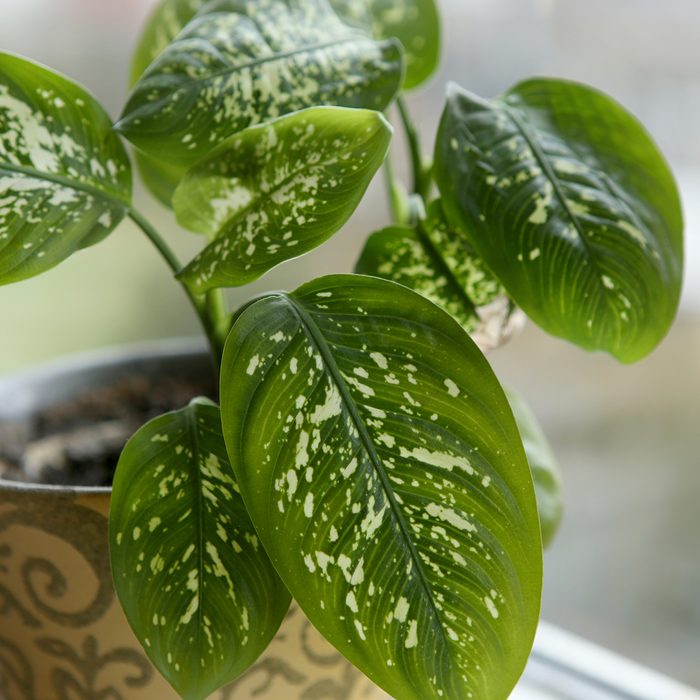
Dumb cane (Diffenbachia)
This stout, leafy tropical indoor plant may be pretty, but it should be kept out of reach of canines. “This plant contains calcium oxalate crystals, which are similar to microscopic pieces of glass resembling needles,” says Dr. Zacharias. “Chewing or ingesting it causes toxicity. Common symptoms are vomiting, swelling of the mouth and/or throat, severe oral pain, pawing at mouth or eyes, severe skin irritation, agitation, coughing, gagging and hypersalivation.” Simply coming into contact with the plant can cause symptoms, as well. Your dog’s eyes and skin may be affected if exposed.
If your pup’s eyes or skin are affected, then eye flushing or a bath is warranted. If the plant is ingested, “treatment includes an anti-emetic to prevent [continued] vomiting, respiratory support if needed due to pain or irritation of the throat, monitoring and pain control. A calcium-containing dairy-based product can also be used to help bind the calcium oxalate crystals in the mouth and throat,” says Dr. Zacharias.
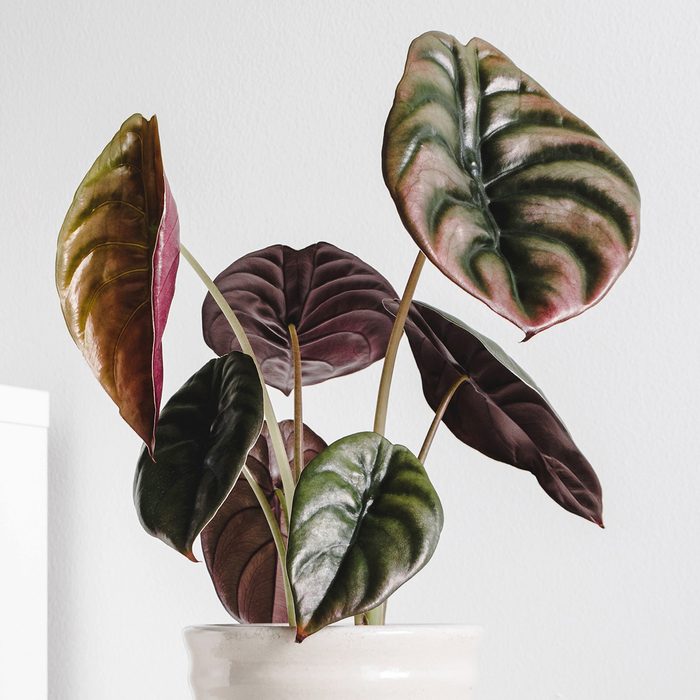
Alocasia
Alocasia—also known as elephant’s ear—is a striking dark green plant commonly found indoors. Like dumb cane, it contains glass-like insoluble oxalate crystals that can cause severe irritation both internally and externally, notes the Pet Poison Helpline. If consumed, an immediate visit to your vet is recommended to monitor and treat symptoms. If your dog’s skin or eyes has become irritated by the plant, a bath and/or flushing the eyes with water is recommended.
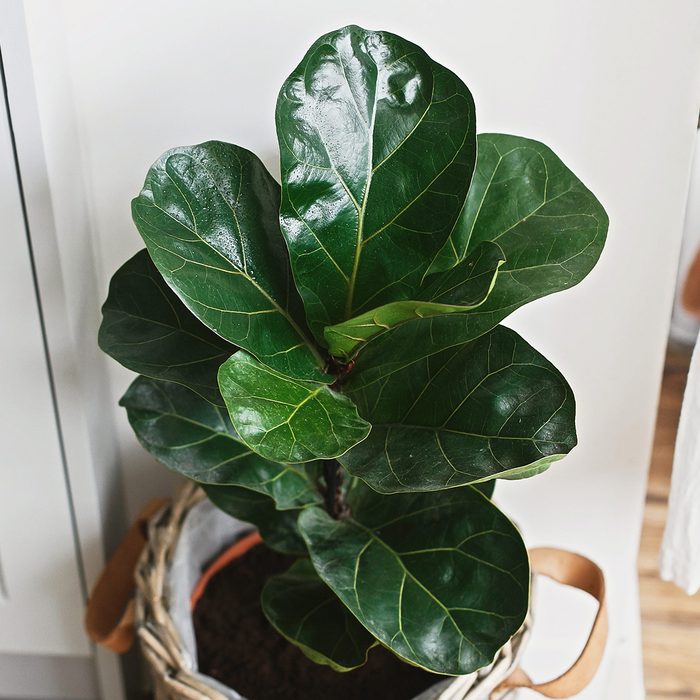
Fruit plants and peels
“Many plants that produce edible fruit—including grapefruit, oranges, lemons and plums—are toxic if the actual plant portion is ingested. For example, the skin of the fruit, the leaves or stems can often be dangerous,” says Dr. Zacharias. Whether you grow these plants in your yard or bring them into your home from the grocery store, keep your dog away from them. Reactions may not be as severe as with other plants, but if you suspect consumption, call your vet for guidance. They may request that you bring your dog in, especially if severe symptoms occur. In addition to fruit plants, there are many other common foods that can be toxic to dogs, as well.
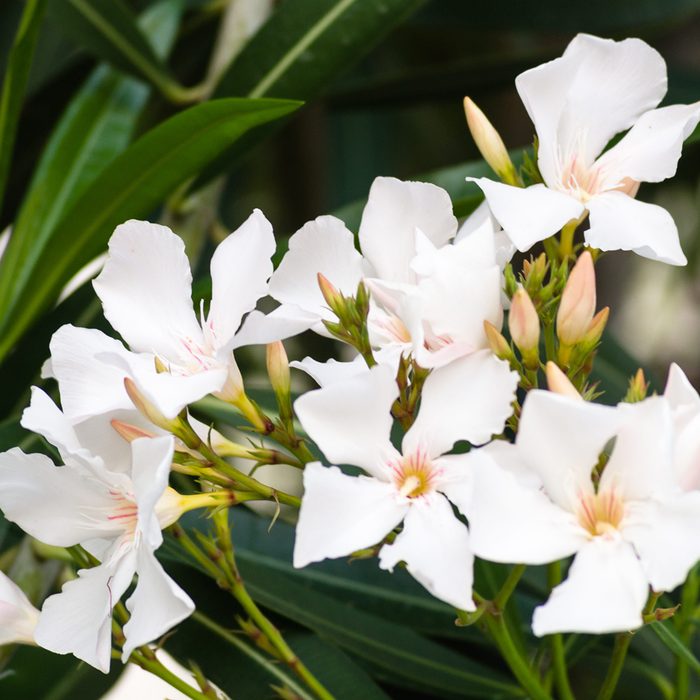
Oleander
Oleander, known for its white or pink flowers and height that provides privacy between yards, is another poisonous plant for dogs. “Oleander ingestion causes extreme salivation, abdominal pain, vomiting, diarrhea and lethargy. In severe cases, it causes liver failure and death, and it can ultimately interfere with the heart’s ability to beat properly,” says Dr. Long. “Once it is known that the dog ingested these poisonous leaves, rapid transfer to a veterinary hospital where vomiting can be induced is key. Supportive therapy with drugs designed to control gastrointestinal signs, as well as reverse liver and heart issues, is key to survival.” If you have a suddenly lethargic dog, these are 5 signs you need to call the vet.
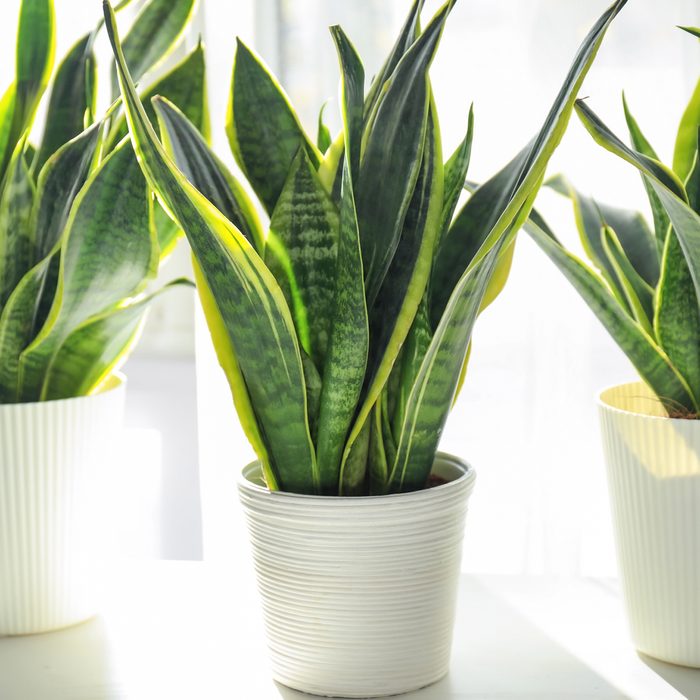
Snake plants (Sansevieria)
Because of its striking appearance and the fact that it’s very easy to care for, snake plants are incredibly popular indoor plants. Unfortunately, they are also poisonous plants for dogs and can cause nausea, vomiting and diarrhea if consumed, says the ASPCA. It’s important to contact your veterinarian right away if you think your dog has ingested any portion of a snake plant. Depending on the severity, you may need to simply monitor and treat your dog’s symptoms, or you may need to take your dog in for more aggressive treatment. These are the cleaning tips all pet owners should know.
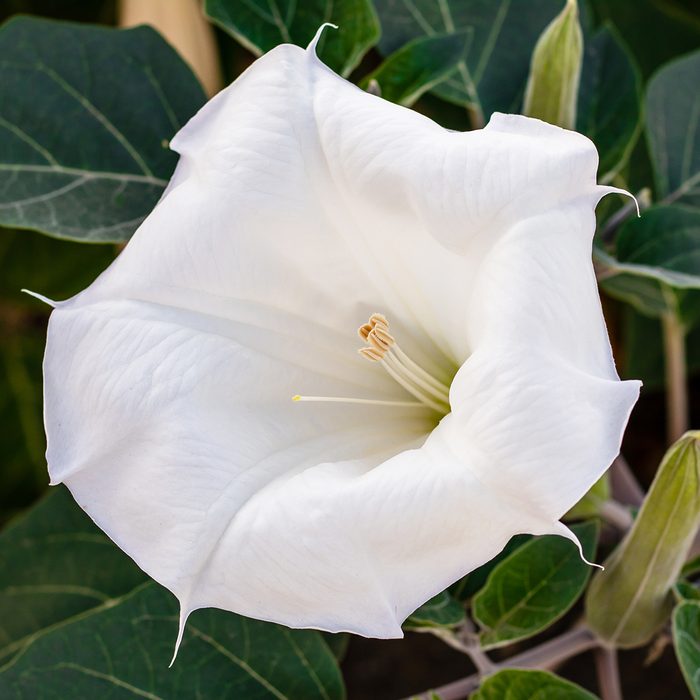
Morning glory
This beautiful vine plant that flowers in the morning may be irresistible to humans—and also to dogs, who might be tempted to chomp on them when they open. “The seeds are most toxic, and canine consumption can cause vomiting, nausea, pupil dilation (mydriasis), hallucinations, incoordination, diarrhea, anemia, confusion and liver failure,” says Dr. Zacharias. Go to your veterinarian or an emergency veterinary center right away. Treatment consists of activated charcoal, IV-fluid administration and ongoing symptomatic support. By the way, this is why dogs are afraid of vacuum cleaners.
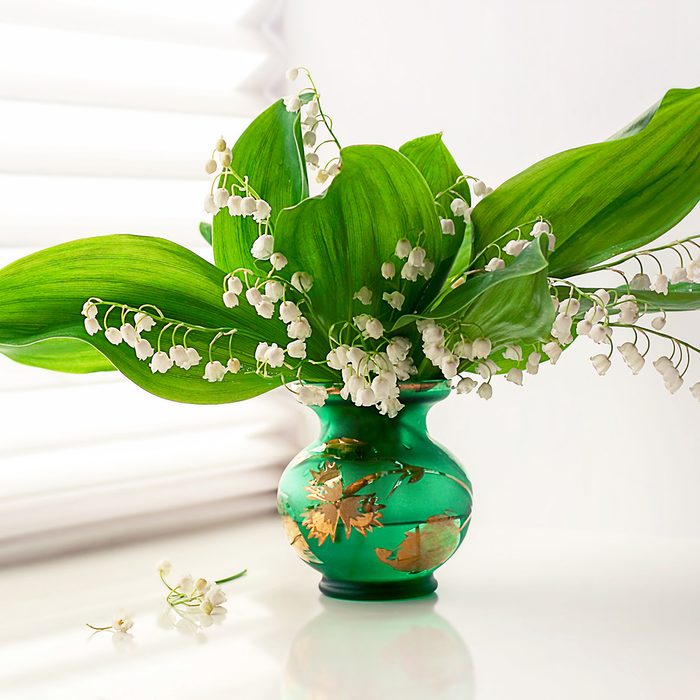
Lily of the valley
Lily of the valley is a beloved indoor and outdoor plant, but if you’re a pet parent, it’s best to not introduce it to your home or garden. This plant and its delicate white flowers are highly toxic to dogs and can result in vomiting, irregular heartbeat, reduced blood pressure, confusion and disorientation, says the ASPCA. In severe cases, it can even cause seizures or lead to a coma. Consult your veterinarian immediately for further instruction if you suspect your dog has consumed this plant.
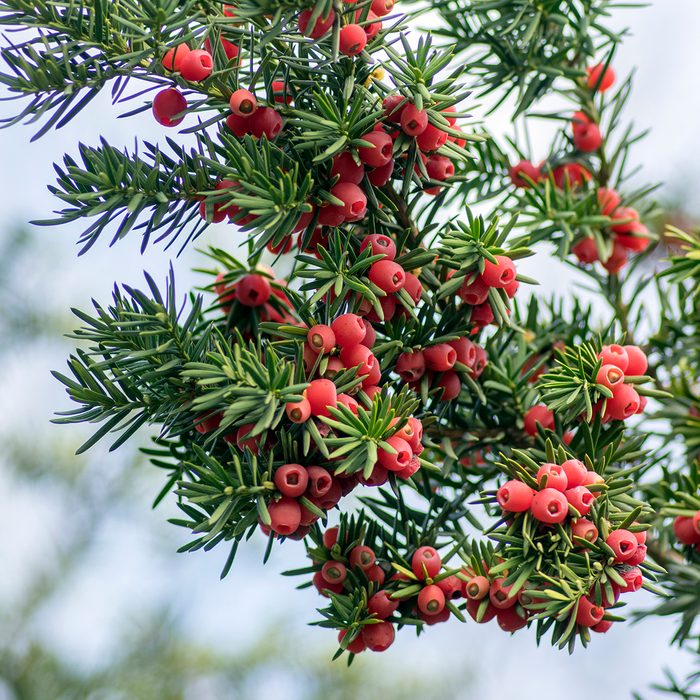
Yew
Yew is an evergreen shrub typically found outdoors. “If ingested, it can cause sudden death, trembling, muscle weakness, trouble breathing, collapse and heart arrhythmia,” says Dr. Zacharias. “If you suspect your canine has eaten any part of this plant, immediately go to your veterinarian or emergency veterinary center. Treatment will consist of gastrointestinal decontamination—activated charcoal or possibly gastric lavage or an enema—as well as IV-fluid therapy and supportive therapy for any respiratory or cardiovascular function.” Once you’ve removed these potentially poisonous plants from your home, brush up on these ways to keep your dog cool this summer.